Capturing the story of Philip Vincent’s life on film sees the SpeedisExpensive crew filming at the historic banked circuit in France last year – featuring one of Patrick Godet’s finest creations
By Mike Nicks and David Lancaster
Photography by Bernard Testemale, Mike Nicks, David Lancaster, Steve Read, Philip Vincent-Day and others.
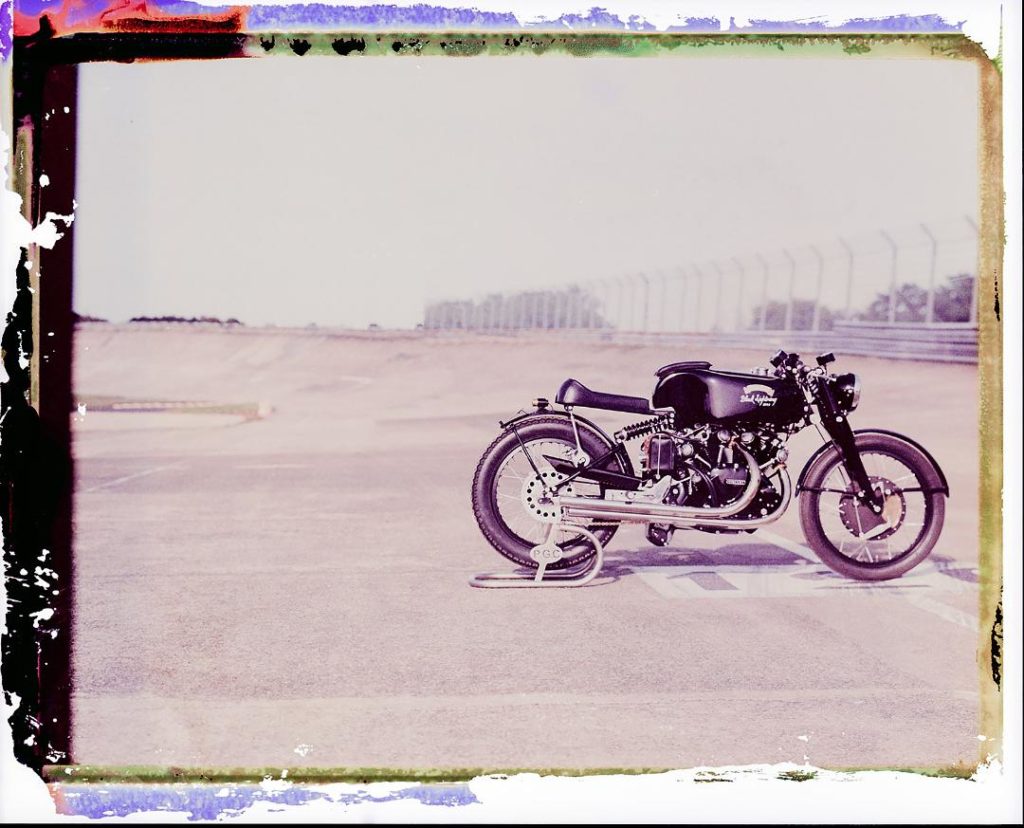
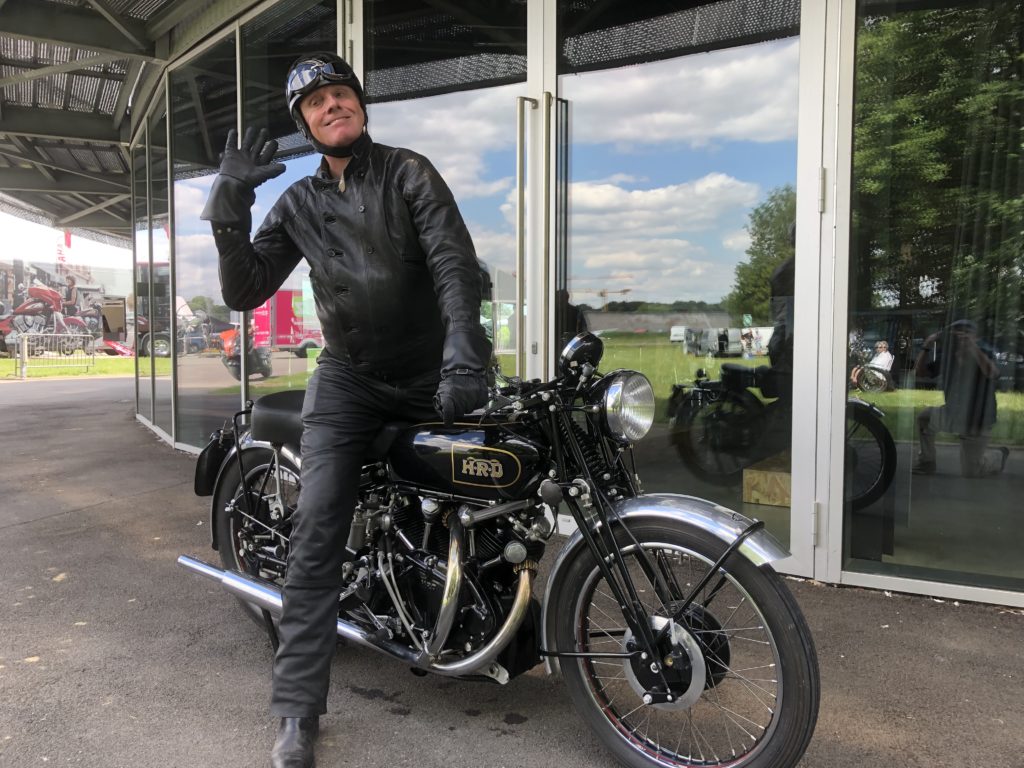
Today’s lock-down on travel and gatherings – this year’s TT was cancelled a couple of weeks back – has cast the calendar of 2019 in a new light. We look back and wonder when fans will be allowed to ride this historic banked circuit again. Or meet at the Rock Store west of LA? Or ride to Box Hill in Surrey… or connect the corners of the Isle of man’s mountain circuit? The sad answer is, we don’t know. So, last year’s Café Racer Festival’s tribute to Frenchman Patrick Godet, who died in 2018, has gained added poignancy. Not only was Godet the doyen of Vincent restorers and special builders, he relished the social side of motorcycling too – founding the French Section of the Vincent Owners Club, hosting its first rallies and during the late 1970s and ’80s making the most of the free-wheeling, often unexpected rewards of touring on motorcycles with friends: taking the wrong turn, lunch on the road, repairs on the way. Event organiser Bertrand Bussilet handed the track over to some 70 Godet Vincents, Egli-Vincents and standard bikes which took part in a parade to mark Patrick’s life.
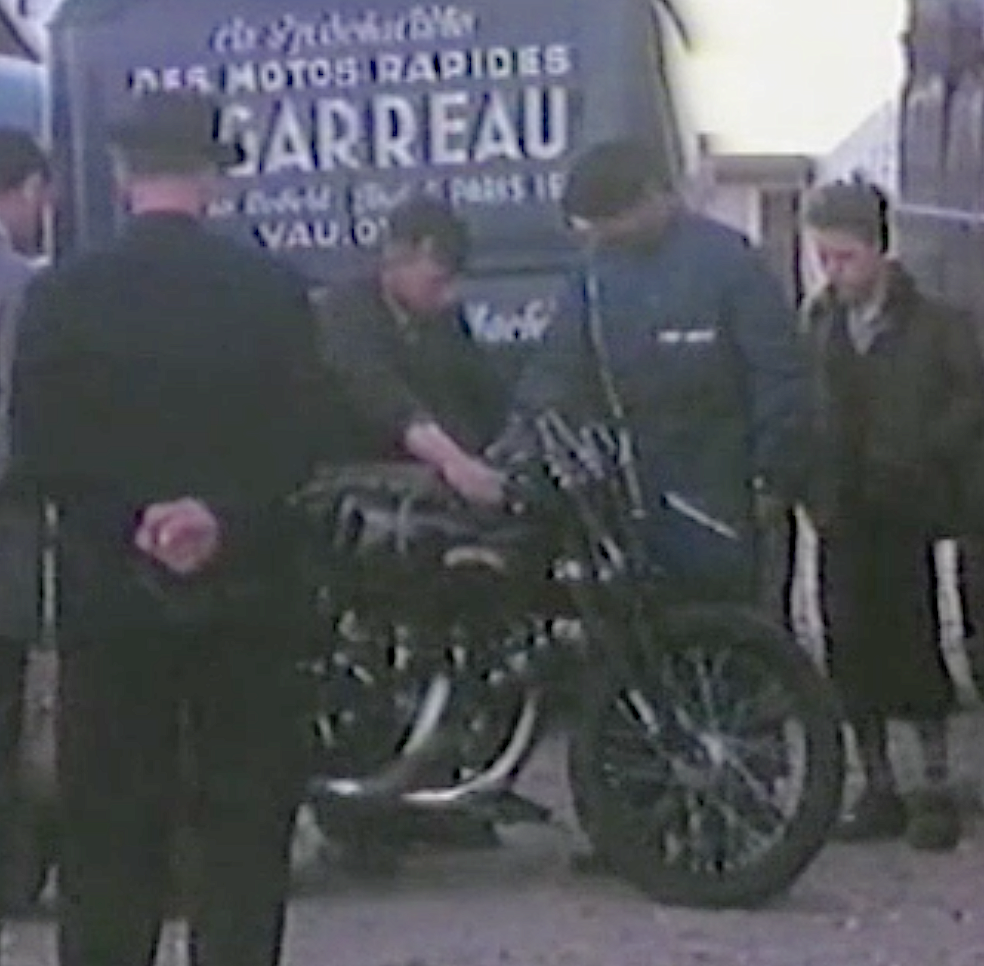
The Godet lineage is continued by workshop chief François Guerin and his team, who are carrying on with restoring Stevenage bikes and building their own Godet Vincents. Patrick was a fan of improving his machines – he was one of the first to fit the Grosset electric starters – but also resolute in his view that the late 1960s bikes which Egli himself produced were the epitome of a Vincent-powered special. He always refused requests to fit disc brakes, or upside down forks or other so-called updates, as other Egli-Vincents wear (and customers asked for). Yet now it is more likely bikes such as Jean Luc Charrier’s stunning Lightning special – which the owner writes about below – will emerge in the coming year or so. It is a bike that breaks rules, bringing together styling cues and components from different eras to a customer’s specification with a stunning result.

To pay tribute to the 1952 record-breaking runs, director of photography Steve Read and producer/cameraman Gerry Jenkinson filmed two notable bikes on the banking: Jean Luc’s Lightning special and Dominique Malcor’s Series B Black Shadow, the first to be imported to France in 1948 and a machine that was timed by Moto Revue magazine at 208kmh, or 128mph, on the autoroute between St Cloud and St Germain. This was at a time when the fastest bikes made by Triumph, Norton and BSA – 500cc parallel twins – would only reach around 85-90mph. There has probably never been another time in motorcycling history when a new model has so far out-paced the opposition. If the Black Shadow was the ‘world’s fastest standard motorcycle’ – as the company’s advertising claimed – then Malcor’s was the the fastest of the fastest.
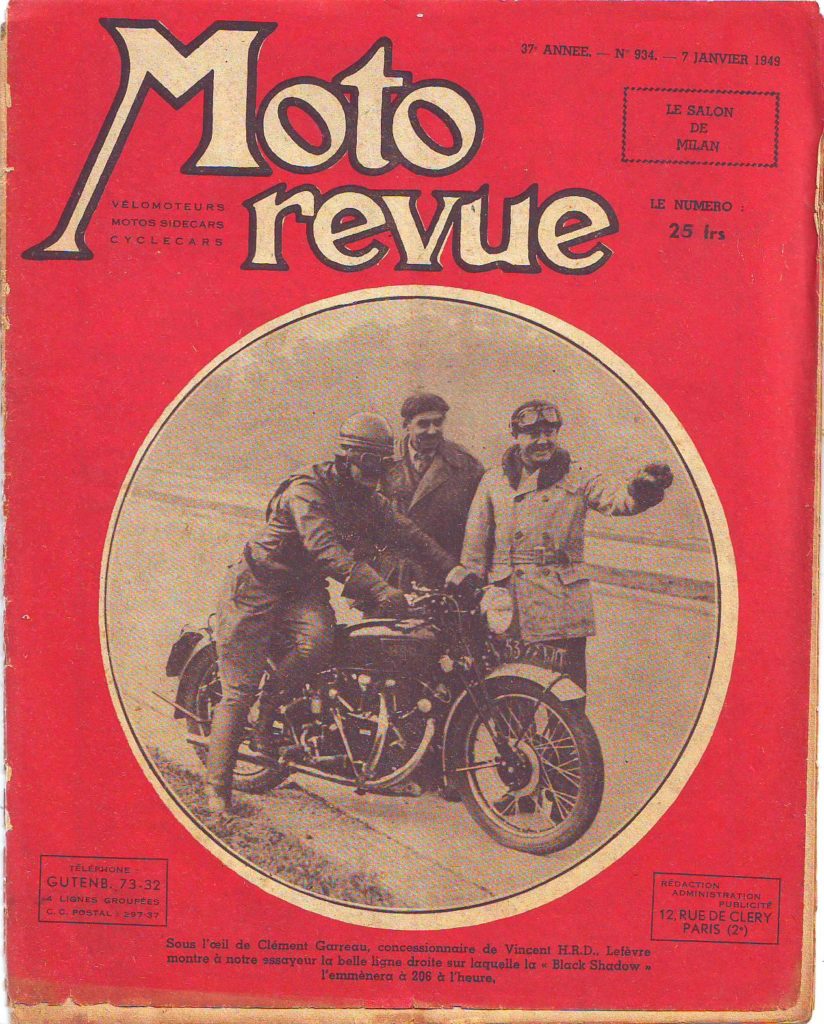
Architect Jean Luc’s ‘Back to Black 1955’ machine is so named because his daughter adores the work of the late Amy Winehouse, whose song Back to Black helped cement her reputation in 2006, and because 1955 was the last year of Vincent production. See below for Jean-Luc’s full description of this fascinating machine. The sequences filmed will form part of our film’s coverage of the records set at the circuit back in 1952 – in many ways a last hurrah for the factory – as it was the final time the firm fully backed racing and record-setting. In addition to these two bikes, filmed with a drone as well conventional panning and tracking, US Producer James Salter captured dramatic footage high on the banking from the sidecar of Australians Bob and Joy Allan’s 1953 Black Shadow/Steib 501 outfit with a Super 8 camera. Go Pros were mounted on several bikes, including fast solo laps by Peter Fox on his own Godet built Lightning Replica.
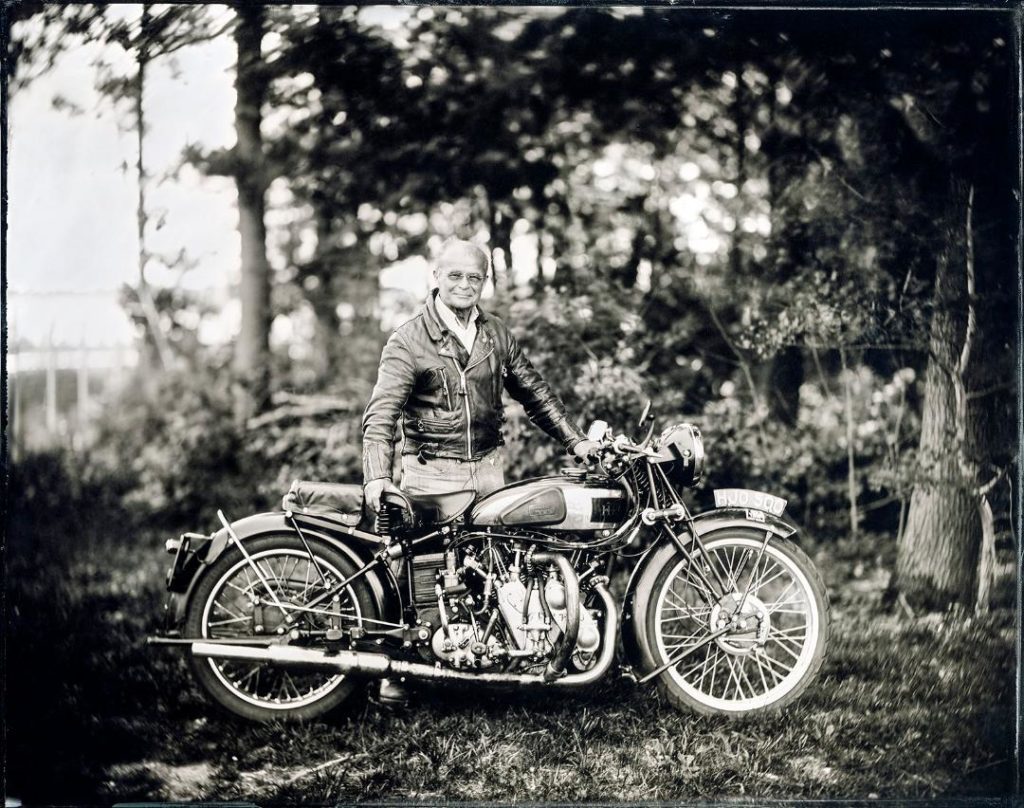
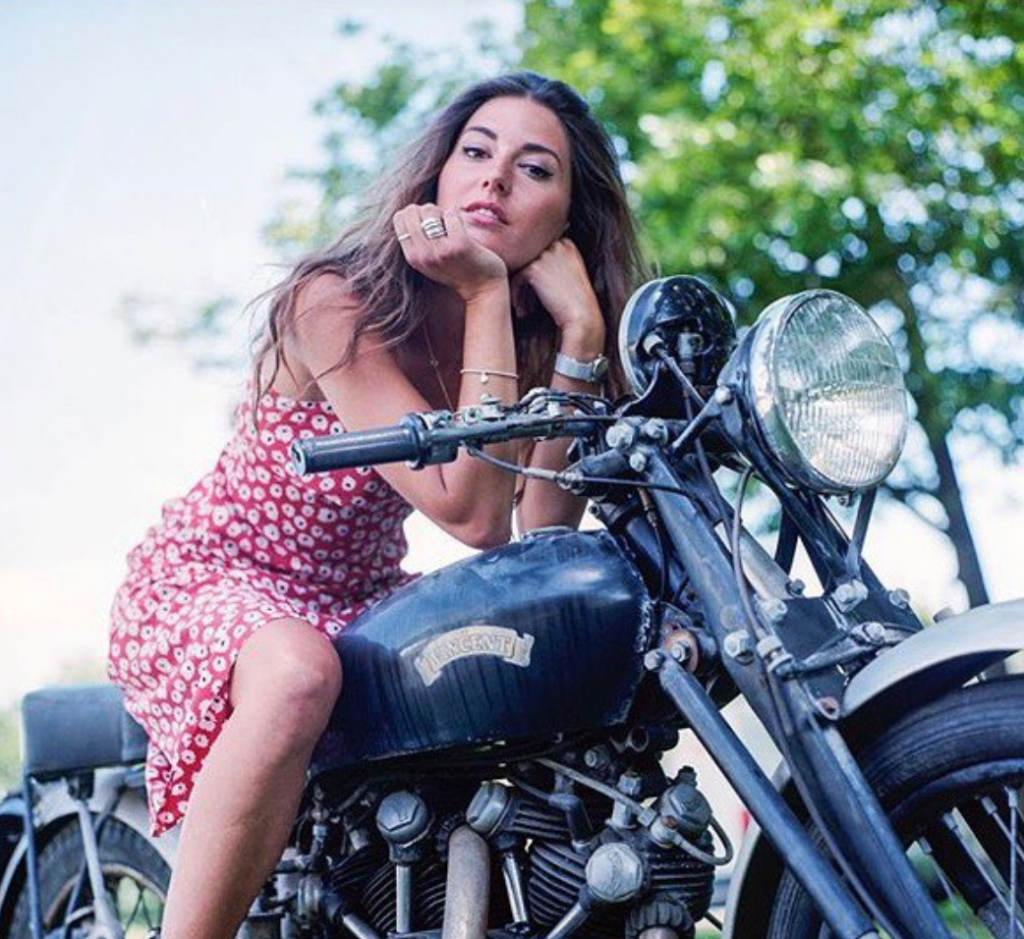
Both brothers are long-term and high-mileage Series A Rapide riders, with great insights into the many highs – and the lows – of racking up thousands of miles on the bikes. A few years back, they shipped their Rapides to the USA and rode them the length of Route 66. Jay Leno got to hear of their journey and welcomed them into his car and motorcycle collection in LA, full of admiration of the brothers’ dedication to ride 80-year old cycles across America. Another friend of our film project was also at work at Montlhéry: Bernard Testemale, an innovative photographer who will be familiar to readers here, and who had set up shop with his wet-plate equipment inside the track. Over the two days of the Café Racer Festival, Bernard captured stunning images of Philip Vincent-Day, Fritz Egli, moto-blogger Evangeline (@lapetitemotorouge), Harvey Bowden with his pre-war Rapide, and others.

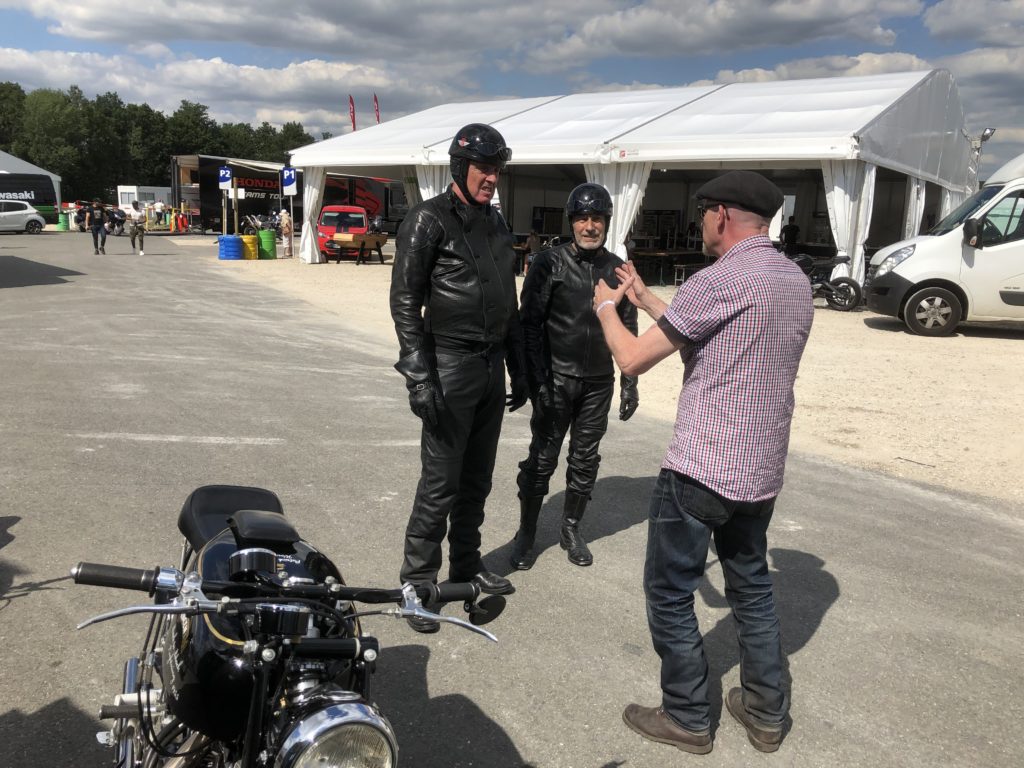
SpeedisExpensive has now entered post-production. Transcripts of interviews – with record-setters, factory personnel, family and friends of Vincent and Irving – are being read to begin to map out a structure for the documentary. Philip Vincent’s life was not easy in its final chapters, and it was a life marked by amazing highs but also crushing lows and personal challenges. The aim is to edit the material into a film which anyone, not just petrol-heads, can engage with to bring those high and lows to the screen.
The ‘Back to Black’ Godet-Vincent special
French architect Jean-Luc Charrier describes what inspired his stunning custom Vincent:
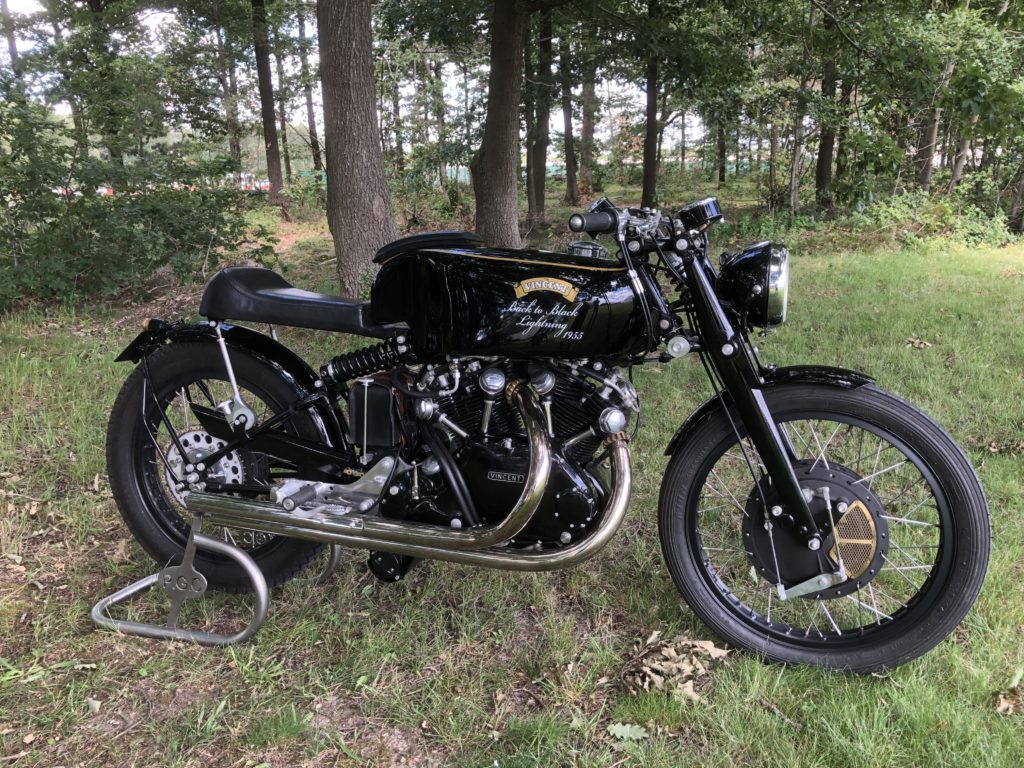
“The first time that I saw a Vincent engine was in a joinery near Gras, in the Ardèche region of France, where I was designing furniture. In the corner of the room the workshop chief had some Vincent parts – a frame, an engine, a set of Girdraulic forks and a fuel tank. At first I thought they must have come from a French motorcycle because of the name Vincent. I saw the engine as an aesthetic structure, and I was struck by the design. But they said that it was an English motorcycle that had been the fastest in the world in the 1950s, and I thought that was magnificent. I was about 30 at the time, and I didn’t have the money to buy a Vincent, but that bike stayed in my head. I started buying motorcycle magazines where I could read about Vincents, and I saw an article in the French magazine Cafe Racer on Patrick Godet, who was what we call in France la Pape (Pope) de la Vincent. I was reading the magazine at a motorway service station, and I called Patrick Godet, and said, ‘Monsieur Godet, bonjour, I’m passionate about Vincents, and I would really like to have one.’”
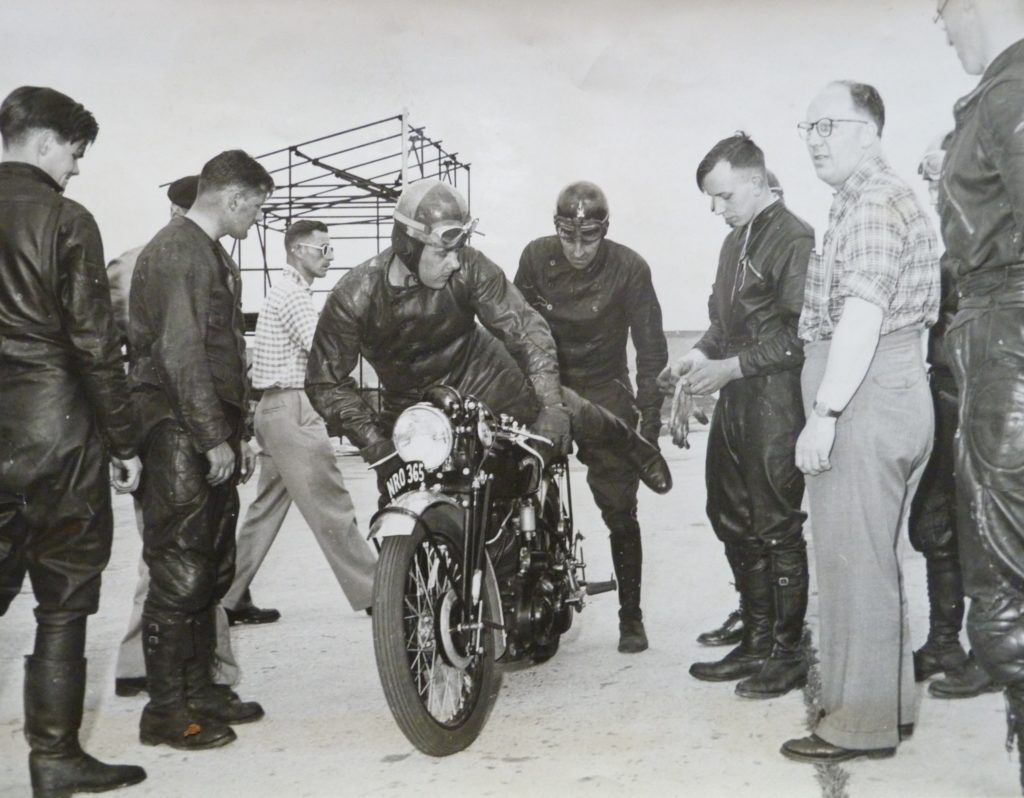
“The parts that I had seen in the joinery were from a Black Shadow Series C. I asked Patrick if he had one for sale, and he said, yes, he had one with a Steib sidecar. With my joiner friend I flew to see him and bought my first Vincent. At first I took the sidecar off and rode the bike as a solo for two or three years. But one day I decided to take my little son to school in the sidecar. Patrick visited my house and showed me how to ride an outfit in a big car park one Sunday, with him sitting in the chair. Then I decided that I wanted a more minimal Vincent, but I didn’t have the skill to restore one. So I sold the sidecar outfit and Patrick built this bike for me, using some of my ideas. For example, I liked the way that Rollie Free streamlined his Girdraulic forks by taping round them for his 150mph speed record at Bonneville in 1948, and I wanted to get that look. So Patrick removed the long spring from the forks and fitted a modern compact one in front of the headstock. The forks now have the shape of those on Rollie’s bike, but where there was tape hiding the spring there is now metal in the same shape. I made the seat and the tank pad myself, in the style of 1950s’ racing motorcycles.”
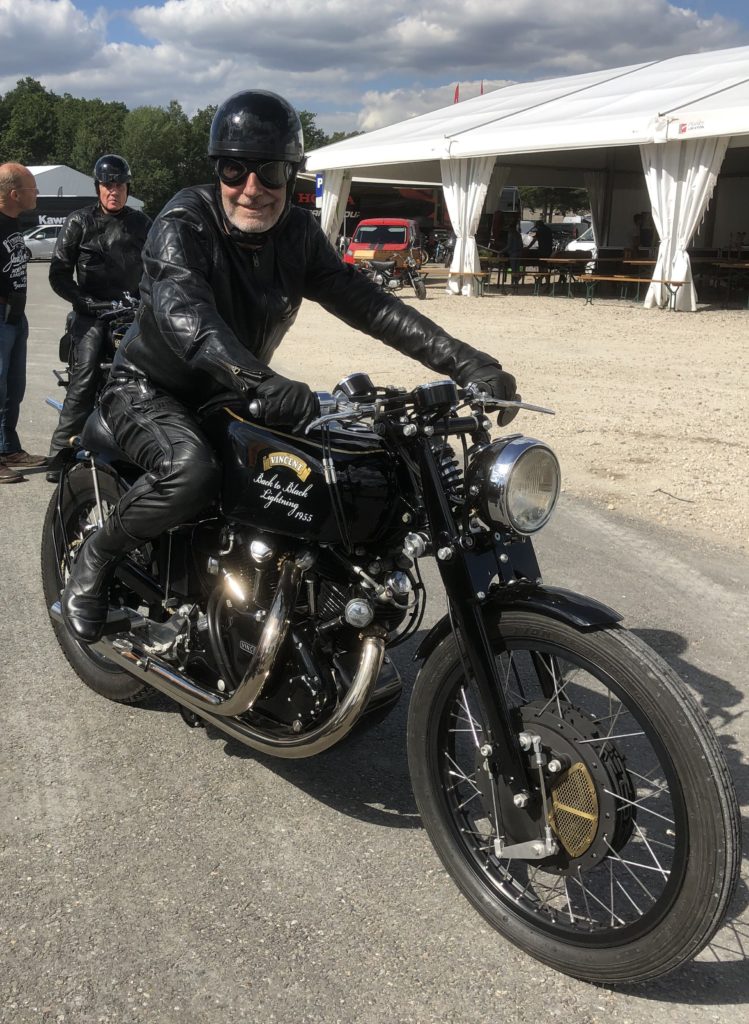
“We arrived at the name of the bike because my daughter, who is a singer herself, loved the music and the sensibility of Amy Winehouse, and she was very upset when Amy died (the song Back to Black was one of her hits). The new generation of technicians and craftsmen at Godet motorcycles are now taking the Vincent legend forward. I am an architect and a designer, so my work, it’s my eye. For me the Vincent engine is magnificent – the way it is suspended from the spine tube, the Girdaulic fork, the tank, the gold lettering on the tank. It’s unique. Monsieur Vincent wanted to create the best motorcycle using the best materials, regardless of the price. The Vincent is the Bugatti of motorcycles. I’m a curious person, and when you’re curious you wonder – why? Why is this motorcycle so mythic, why do people react to it in the way that they do when they see what is really just a mechanical object? The Vincent goes beyond the fact of just being a motorcycle. There are thousands of motorcycles, but there’s only one Vincent.”
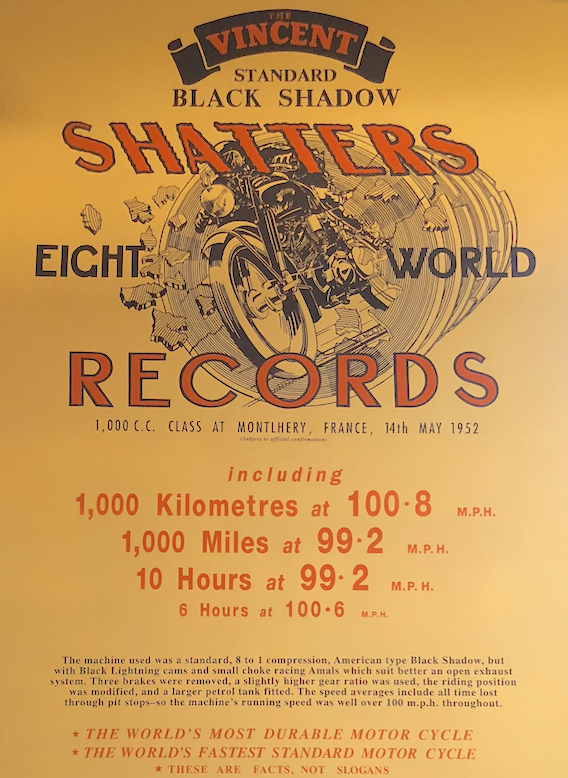
Related Posts
November 10, 2019
The Vintagent Selects: Revisiting Montlhéry – with John Surtees
John...would you have a go?

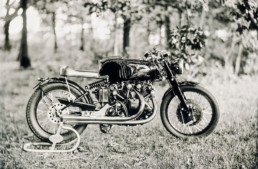
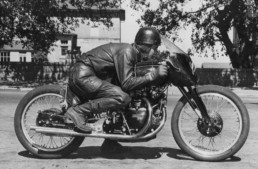
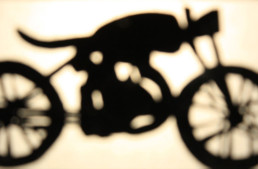
They aint nuthin like a face full o’ Vincents to put a smile on my beleaguered face
Rock On – Ride On – Remain Calm ( despite it all ) and do all please .. stay safe.. stay healthy .. and Carry On